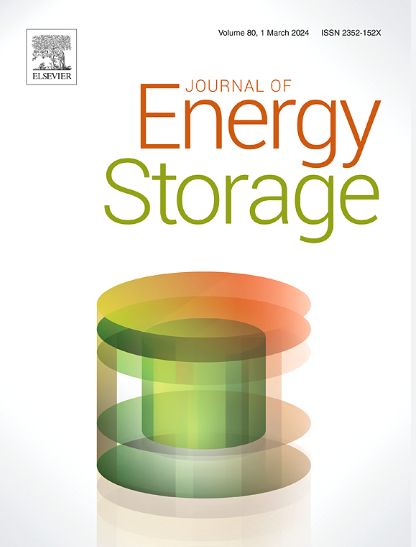Upcycling electroplating sludge metals into ultrathin NiFeAl-LDH nanosheets for advanced energy storage applications
IF 8.9
2区 工程技术
Q1 ENERGY & FUELS
引用次数: 0
Abstract
Recovering heavy metals from industrial solid waste and upgrading them into high-value products is of great significance for addressing environmental pollution and promoting resource recycling. In this study, electroplating sludge containing mainly Ni, Fe, and Al was used as the raw material, and by adding nickel chloride to regulate the M(II)/M(III) ratio, the Ni, Fe, and Al in the sludge were converted into high-value NiFeAl-LDH nanosheets with excellent electrochemical properties. At a current density of 1 A g−1, NiFeAl-LDH-2 exhibits a specific capacitance of 1763.4 F g−1. When assembled as the cathode with activated carbon as the anode in a hybrid supercapacitor (HSC), the highest energy density reaches 43.89 Wh kg−1 at a power density of 800 W kg−1. Furthermore, the HSC demonstrates minor capacity decay over 10,000 cycles at a high current load of 4 A g−1, and after connecting two HSC devices in series, the LED indicator light can easily be illuminated. The solid-state NiFeAl-LDH-2//AC hybrid supercapacitor demonstrates potential application in portable electronic devices due to its excellent electrochemical properties, making it feasible to upgrade electroplating sludge into battery electrode materials.
将电镀污泥金属升级为超薄NiFeAl-LDH纳米片,用于先进的储能应用
从工业固体废物中回收重金属并将其转化为高价值产品,对于解决环境污染和促进资源循环利用具有重要意义。本研究以含Ni、Fe、Al为主的电镀污泥为原料,通过添加氯化镍调节M(II)/M(III)比,将污泥中的Ni、Fe、Al转化为电化学性能优异的高值NiFeAl-LDH纳米片。在电流密度为1 a g−1时,NiFeAl-LDH-2的比电容为1763.4 F g−1。在混合超级电容器(HSC)中,以活性炭为阳极,以阴极组装时,当功率密度为800 W kg - 1时,能量密度最高可达43.89 Wh kg - 1。此外,在4 a g−1的高电流负载下,HSC在10,000个周期内显示出较小的容量衰减,并且在串联两个HSC设备后,LED指示灯可以很容易地照亮。固态NiFeAl-LDH-2//AC混合超级电容器由于其优异的电化学性能,在便携式电子设备中展示了潜在的应用前景,使电镀污泥升级为电池电极材料成为可能。
本文章由计算机程序翻译,如有差异,请以英文原文为准。
求助全文
约1分钟内获得全文
求助全文
来源期刊

Journal of energy storage
Energy-Renewable Energy, Sustainability and the Environment
CiteScore
11.80
自引率
24.50%
发文量
2262
审稿时长
69 days
期刊介绍:
Journal of energy storage focusses on all aspects of energy storage, in particular systems integration, electric grid integration, modelling and analysis, novel energy storage technologies, sizing and management strategies, business models for operation of storage systems and energy storage developments worldwide.
 求助内容:
求助内容: 应助结果提醒方式:
应助结果提醒方式:


